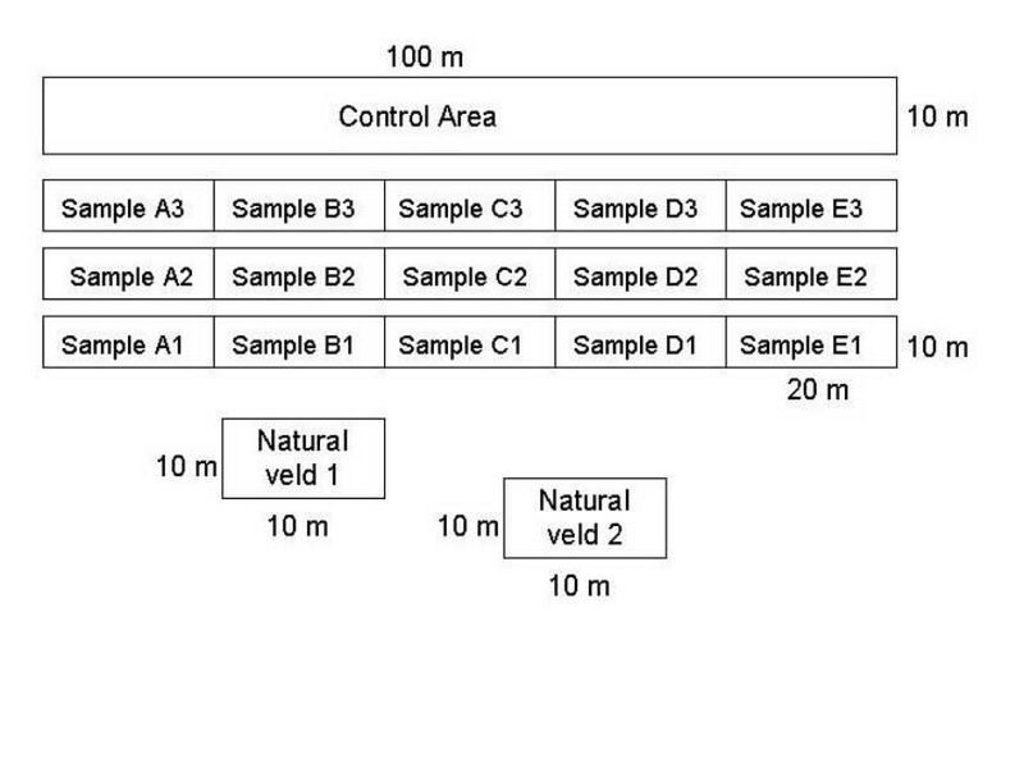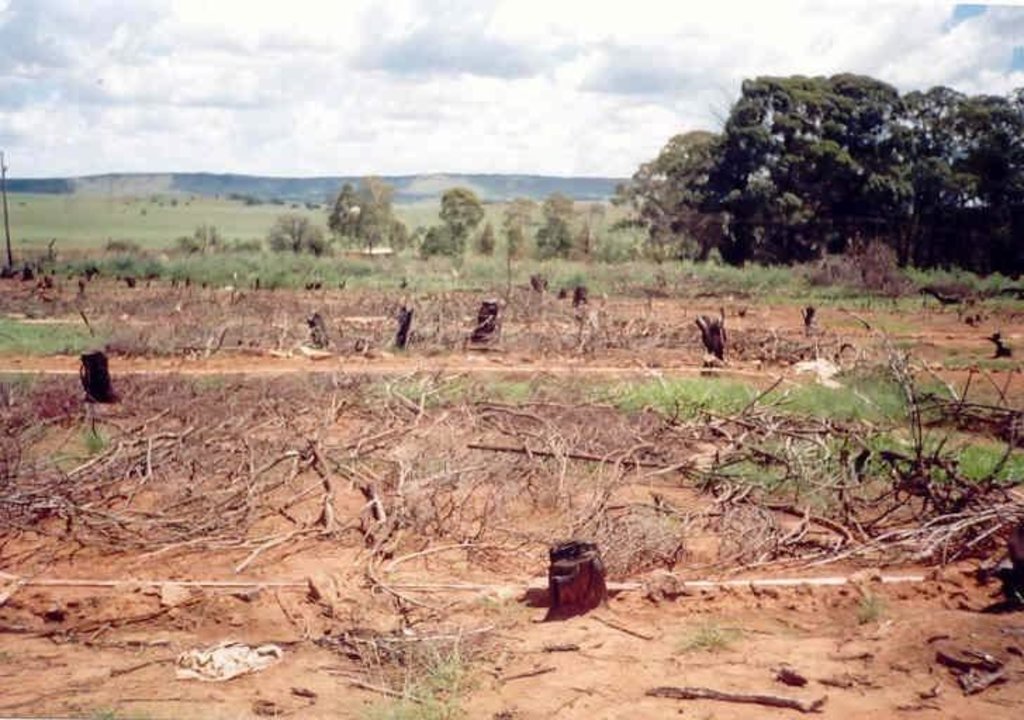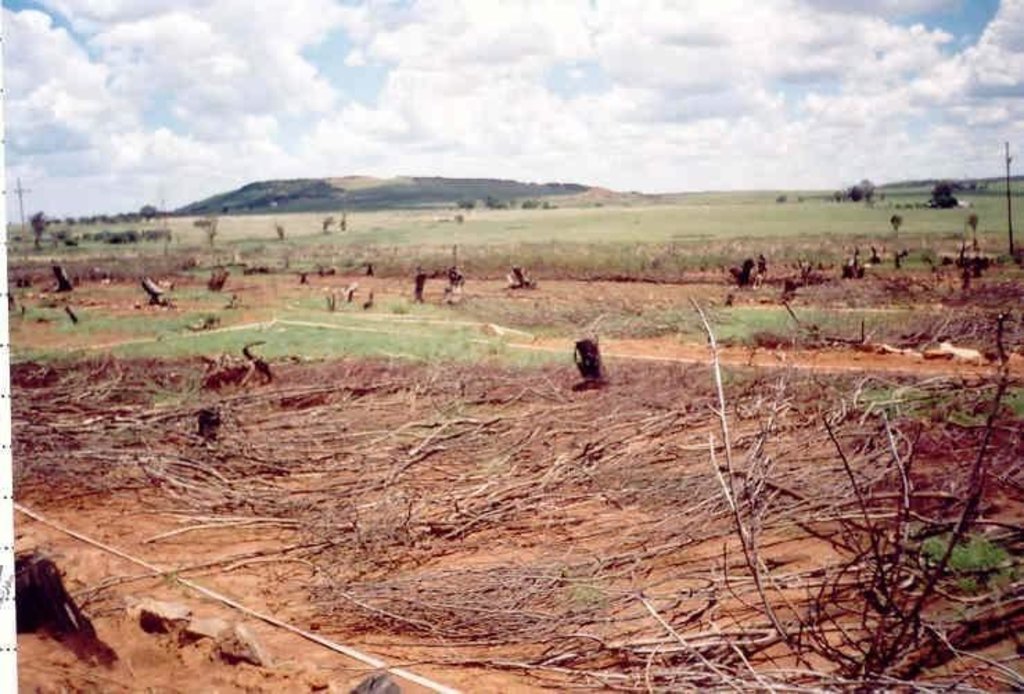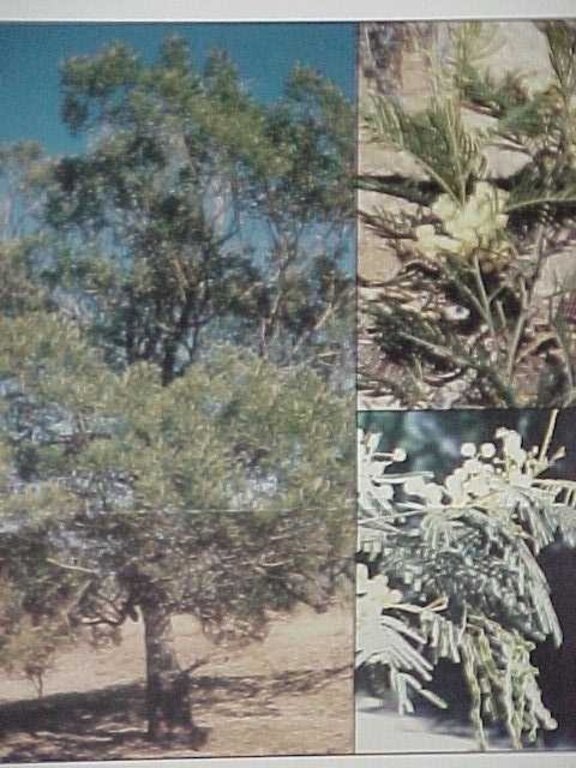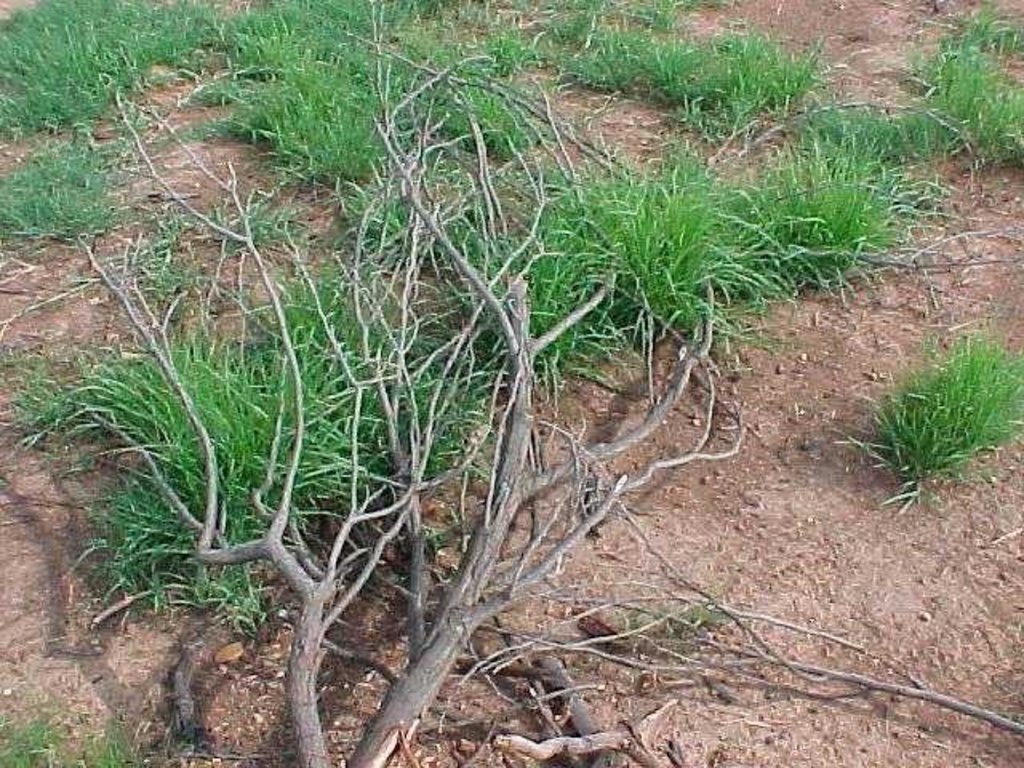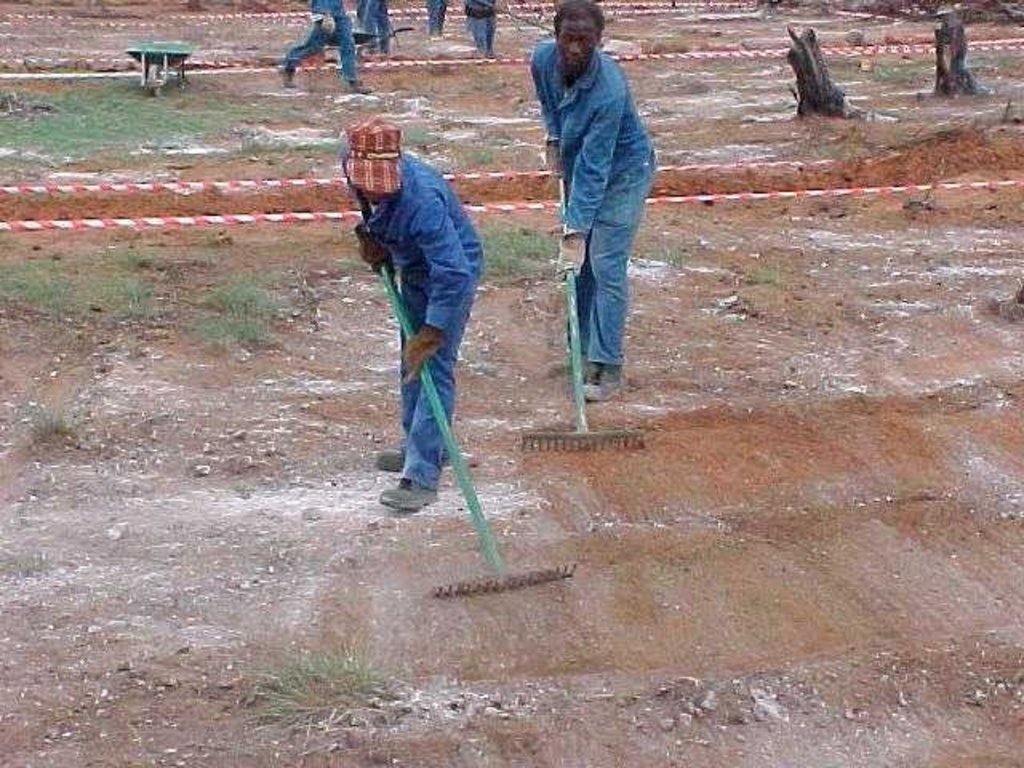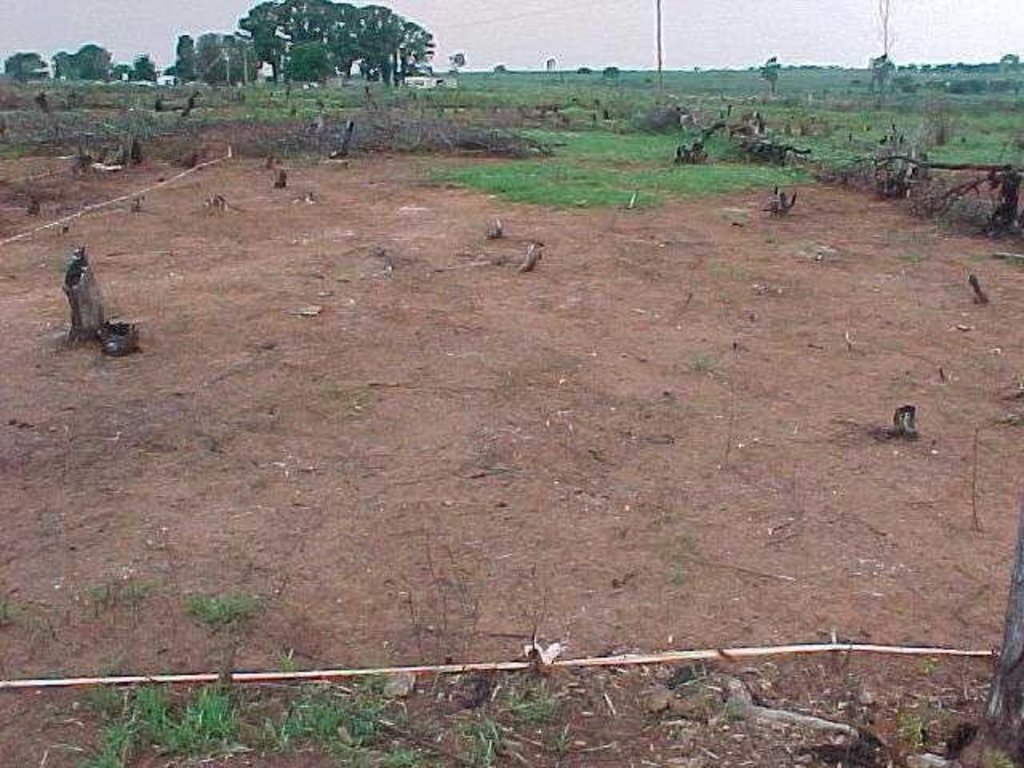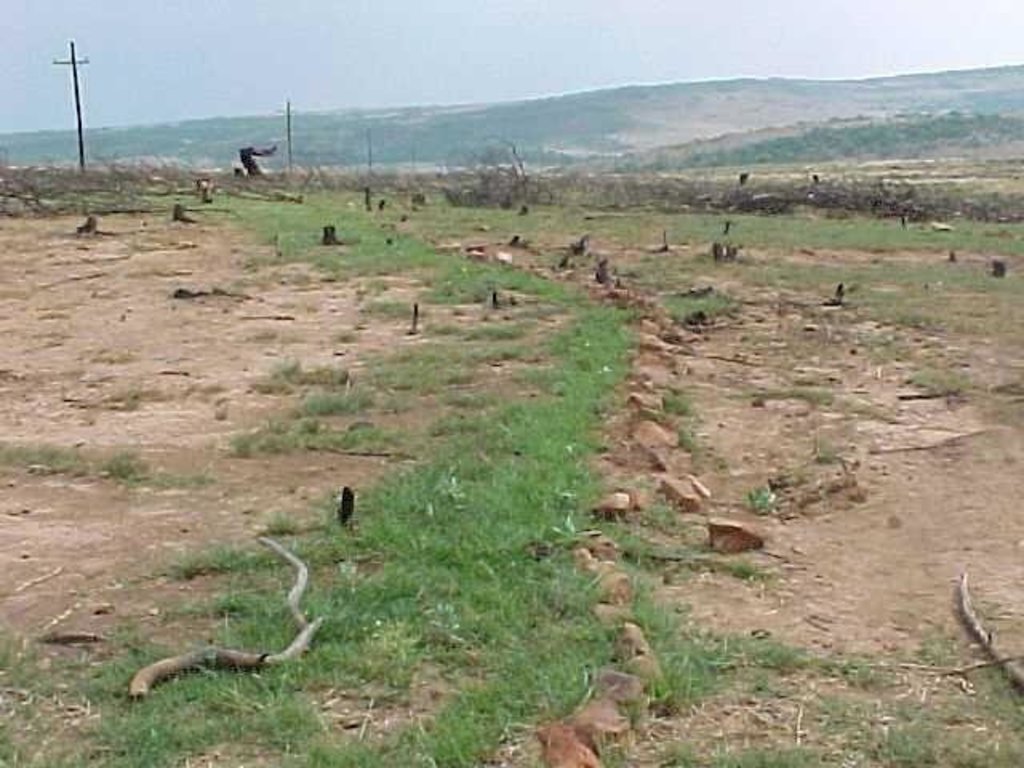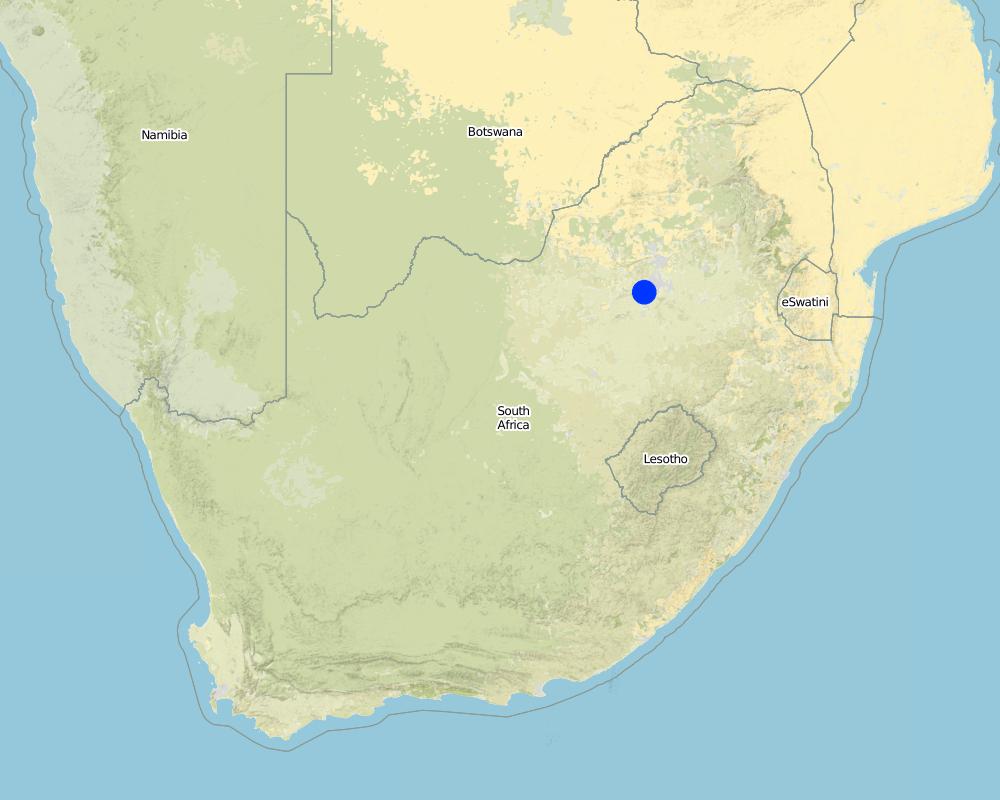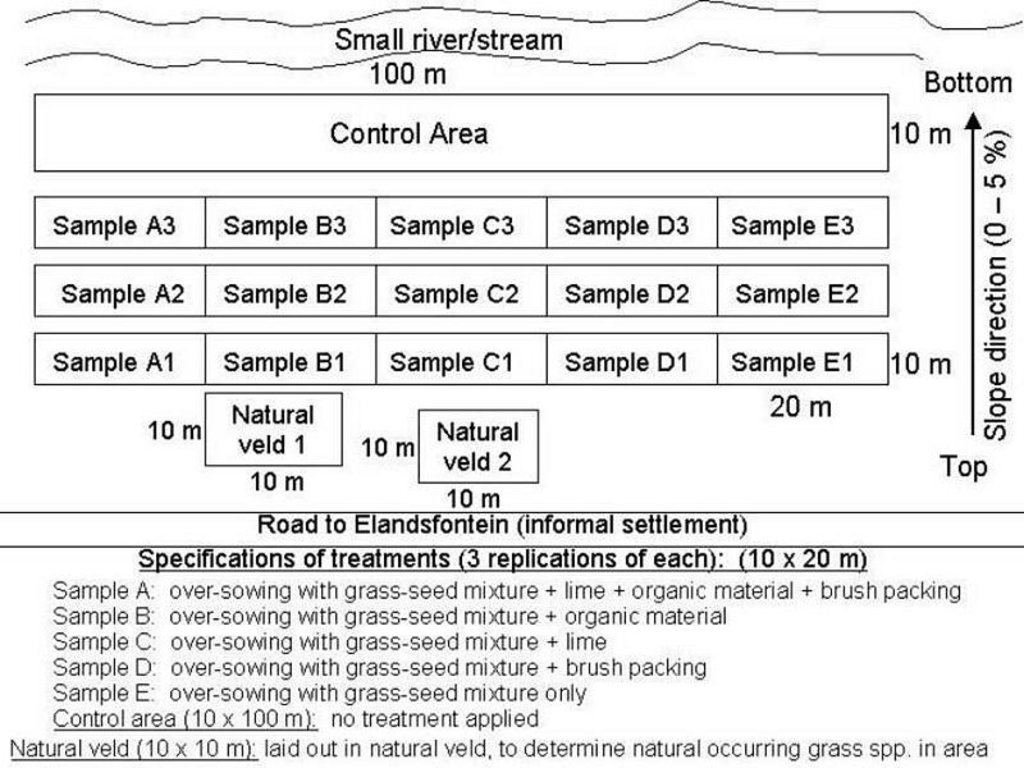Restoration of degraded rangeland [جنوب أفريقيا]
- تاريخ الإنشاء:
- تحديث:
- جامع المعلومات: Klaus Kellner
- المحرر: –
- المراجعون: Deborah Niggli, Alexandra Gavilano
Rehabilitation/restoration of an area, after control of alien invasive species.
technologies_1416 - جنوب أفريقيا
عرض الأقسام
توسيع الكل طي الكل1. معلومات عامة
1.2 تفاصيل الاتصال بالأشخاص الرئيسيين لمصدر المعلومات والمؤسسات المشاركة في تقييم وتوثيق التقنية
متخصص في الإدارة المستدامة للأراضي:
Van Rensburg Leon
جنوب أفريقيا
متخصص في الإدارة المستدامة للأراضي:
Fulls Erich
جنوب أفريقيا
اسم المشروع الذي سهّل توثيق/تقييم التقنية (إذا كان ذلك على صلة)
Book project: where the land is greener - Case Studies and Analysis of Soil and Water Conservation Initiatives Worldwide (where the land is greener)اسم المشروع الذي سهّل توثيق/تقييم التقنية (إذا كان ذلك على صلة)
Sustainable Land Management Practices of South Africa (SLM South Africa)1.3 الشروط المتعلقة باستخدام البيانات الموثقة من خلال WOCAT
يوافق جامع المعلومات والشخص (لاشخاص) الرئيسي لمصدر المعلومات على الشروط المتعلقة باستخدام البيانات الموثقة من خلال WOCAT:
نعم
1.4 إعلان بشأن استدامة التقنية الموصوفة
هل التقنية الموصوفة هنا تمثل مشكلة فيما يتعلق بتدهور الأراضي، بحيث لا يمكن إعلانها تقنية مستدامة لإدارة الأراضي؟:
كلا
2. وصف تقنيةالإدارة المستدامي للأراضي
2.1 وصف مختصر للتقنية
تعريف التقنية:
Eradication of invasive species and revegetation of degraded rangelands by different treatments, including oversowing with grass seed mixture, supplementing with lime, cattle dung, and "brush packing" (laid out branches).
2.2 وصف تفصيلي للتقنية
الوصف:
A research investigation was undertaken in an area of degraded communal rangeland, which had been invaded by an alien tree species (Acacia mearnsii – black wattle). Competition from the water-demanding A. mearnsii, combined with overgrazing, had resulted in an almost total absence of palatable grasses. All that was left were a few patches of star grass (or ‘bermuda grass’: Cynodon dactylon). Prior to the research, discussions were held between personnel of the ‘Working for Water’ programme of the South African government and community members.
The purpose of the trials was to determine how best to eradicate the invasive trees and revegetate the rangeland. The restoration area was not fenced off and was thus open to grazing. The trials comprised five treatments, with three replicates each, on plots of 10 m by 20 m. In all treatments the A. mearnsii was eradicated manually, and chemical biocide applied to the stumps to prevent regrowth. Lime and grass seed (of palatable species) were applied to the loosened surface and covered with soil. The five treatments were:
(A) oversowing with grass seed mixture, supplementing of dolomitic lime, cattle dung, and ‘brush packing’ (see below for explanation of term);
(B) oversowing with grass seed mixture and supplementing with cattle dung;
(C) oversowing with grass seed mixture and supplementing with dolomitic lime;
(D) oversowing with grass seed mixture and brush packing;
(E) oversowing with grass seed mixture only.
In addition stone lines were laid out along the contour, between plots. The ‘brush packing’, referred to in treatments A and D comprised branches laid out in strips across the slope to retard runoff, trap soil, improve the micro-climate for establishing grass seedlings and protect the young plants from browsing by animals. The results showed treatment A to be the most effective in restoring the productive and protective function of the rangeland. From the trials, the estimated costs of applying the best technology would be US$ 230 per hectare. The key constraints for successful adoption however are not just technical, but include: (1) the need to protect the area from grazing and trampling by animals during the establishment period; (2) stopping removal of brushwood for firewood; and (3) the need for community agreement on initial protection and subsequent sustainable utilisation of the restored range.
Establishment activities:
1.Manual eradication of trees with chain saw and axe
2.Application of chemical biocide to the stumps to prevent any regrowth
3.Ripping of soil surface to a depth of 5 cm using a three tined hand implement
4.Application of dolomitic lime and raking it into soil after ripping of the soil
5.Application of organic material (cattle dung) after ripping and lime application
6.Oversowing with grass seed mixture after ripping of the soil and application of lime and organic material
7.Brush packing against contour and packing of rock contours against the slope All the branches and stones were collected from the restoration area. Rock contours were packed against (perpendicular) to the slope in the study area at varying intervals (approximately 10-15 m apart) in order to retard runoff water, trap soil, and improve conditions for seed germination (see inserted drawing below and attachment). Branches were packed (brush packing) along the slope in certain treatments within the study site in order to trap soil, retard runoff water en serve as a micro-climate for germinating and establishing grass seedlings
Total duration of restoration took 3 years, from removal of trees till revegetation trials were laid out and technology was established.
Maintenance / recurrent activities per year:
Following initial establishment maintenance was limited to 2 follow up applications of herbicide (after 3 and 5 months). Maintenance of contours was not done after restoration.
2.3 صور التقنية
2.5 البلد/المنطقة/المواقع التي تم تنفيذ التقنية فيها والتي يغطيها هذا التقييم
البلد:
جنوب أفريقيا
المنطقة/الولاية/المحافظة:
Gauteng
مزيد من التفاصيل حول الموقع:
Johannesburg
حدد انتشار التقنية:
- منتشرة بالتساوي على مساحة
إذا كانت التقنيةا موزعة بالتساوي على منطقة ما، حدد المساحة المغطاة (بالكيلومتر المربع):
9,0
إذا كانت المساحة الدقيقة غير معروفة، فيرجى الإشارة إلى المنطقة التقريبية المغطاة:
- 10-1 كم2
التعليقات:
Total area covered by the SLM Technology is 9 km2.
Big area near settlement, was previously invaded by alien invasive species (such as A. mearnsii). Aim was to eradicate this species by using chemical/manual methods and to revegetate area with grass species occurring naturally.
Map
×2.6 تاريخ التنفيذ
في حالة عدم معرفة السنة بالتحديد، يرجى الإشارة إلى التاريخ التقريبي:
- منذ أقل من 10 سنوات (مؤخرًا)
2.7 إدخال التقنية
حدد كيف تم إدخال التقنية:
- أثناء التجارب/الأبحاث
التعليقات (نوع المشروع، الخ):
It originated from the overall need to restore degraded rangelands.
3. تصنيف تقنية الإدارة المستدامي للأراضي
3.1 الغرض الرئيسي ( الأغراض الرئيسية) للتقنية
- الحد من تدهور الأراضي ومنعه وعكسه
3.2 نوع (أنواع) استخدام الأراضي الحالية حيث يتم تطبيق التقنية

أراضي الرعي
الرعي الواسع النطاق:
- رعي شبه مرتحل
- cattle
التعليقات:
Major land use problems (compiler’s opinion): Occurrence of bare areas after control of alien invasive.
Major land use problems (land users’ perception): Minimal grazing for cattle, due to the occurrence of bare areas.
Grazingland comments: No area closure, thus livestock graze freely on statelands and thus causes overgrazing over a large area.
This is a constraint to management in grazing lands. No rotational grazing. No area closure, thus livestock graze freely on statelands and thus causes overgrazing over a large area.
Number of growing seasons per year: 1
Longest growing period in days: 210, Longest growing period from month to month: Oct - April
3.4 إمدادات المياه
إمدادات المياه للأرض التي يتم تنفيذ التقنية عليها:
- بعلية
3.5 مجموعةالإدارة المستدامة للأراضي التي تنتمي إليها هذه التقنية
- الرعي وإدارة المراعي
3.6 التدابير التقنية في مجال إلادارة المستدامة للأراضي

التدابير الزراعية
- A7: أخرى

التدابير النباتية
- V5: أخرى

التدابير البنيوية
- S11: غير ذلك
التعليقات:
Specification of other agronomic measures: manuring, lime, 'brush packing' (trash lines)
Specification of other vegetative measures: oversowing grass seed mixture
Specification of other structural measures: stone lines
Type of vegetative measures: in blocks
3.7 الأنواع الرئيسية من تدهور الأراضي التي تناولتها التقنية

تآكل التربة بالمياه
- الوزن(Wt): فقدان التربة السطحية/تآكل السطح

التدهور الكيميائي للتربة
- (Cn): تراجع الخصوبة وانخفاض محتوى المادة العضوية (غير ناتج عن الانجراف)

التدهور المادي أو الفيزيائي للتربة
- (Pc) : تراص التربة

التدهور البيولوجي
- (Bc): تناقص الغطاء النباتي
التعليقات:
Main causes of degradation: deforestation / removal of natural vegetation (incl. forest fires) (Alien invasives.), over-exploitation of vegetation for domestic use (Trampling.), overgrazing (Cattle and goat.)
Secondary causes of degradation: poverty / wealth (Lack of captial - To pay labours to apply technologies.), labour availability (Lack of labour - To remove alien species.)
3.8 منع أو حد أو عكس تدهور الأراضي
تحديد هدف التقنية فيما يتعلق بتدهور الأراضي:
- الحد من تدهور الأراضي
- اصلاح/إعادة تأهيل الأراضي المتدهورة بشدة
4. المواصفات الفنية، وأنشطة التنفيذ، والمدخلات، والتكاليف
4.1 الرسم الفني للتقنية
المواصفات الفنية (المتعلقة بالرسم الفني):
Specifications
Location: Elandsfontein. Gauteng
Technical knowledge required for field staff / advisors: high
Technical knowledge required for land users: moderate
Main technical functions: control of raindrop splash, control of dispersed runoff: retain / trap, increase in organic matter, sediment retention / trapping, sediment harvesting, increase in soil fertility, improvement of ground cover
Secondary technical functions: control of dispersed runoff: impede / retard, reduction of slope angle, increase of surface roughness, increase of infiltration, water harvesting / increase water supply, water spreading, reduction in wind speed, improvement of soil structure
Vegetative measure: contour
Vegetative material: O : other
Number of plants per (ha): 0
Vertical interval between rows / strips / blocks (m): 0.3
Spacing between rows / strips / blocks (m): 3
Vertical interval within rows / strips / blocks (m): 0
Width within rows / strips / blocks (m): 0.3
Vegetative measure: Vegetative material: O : other
Grass species: Mixture of perennial and annual grasses
Other species: rocks
Slope (which determines the spacing indicated above): 5.00%
المؤلف:
Anuschka Barac
4.2 معلومات عامة بخصوص حساب المدخلات والتكاليف
عملة أخرى/ عملة وطنية (حدد):
Rand
إذا كان ذا صلة، وضح سعر الصرف من الدولار الأمريكي إلى العملة المحلية (على سبيل المثال، 1 دولار أمريكي = 79.9 ريال برازيلي): 1 دولار أمريكي =:
8,2
اذكر متوسط تكلفة أجر العمالة المستأجرة في اليوم الواحد:
4.30
4.3 أنشطة التأسيس
| النشاط | التوقيت (الموسم) | |
|---|---|---|
| 1. | Eradication of trees, Follow-up with herbicide | beginning of project |
| 2. | Loosening of soil, Lime application | 6 months |
| 3. | Application of organic material | 6 months |
| 4. | Oversowing with grass seed mixture | 6 months |
| 5. | Brush packing | 6 months |
4.4 التكاليف والمدخلات اللازمة للتأسيس
| تحديد المدخلات | الوحدة | الكمية | التكاليف لكل وحدة | إجمالي التكاليف لكل مدخل | % من التكاليف التي يتحملها مستخدمو الأراضي | |
|---|---|---|---|---|---|---|
| العمالة | labour | ha | 1,0 | 35,0 | 35,0 | |
| معدات | machine use | ha | 1,0 | 65,0 | 65,0 | |
| معدات | tools | ha | 1,0 | 5,0 | 5,0 | |
| المواد النباتية | seeds | ha | 1,0 | 70,0 | 70,0 | |
| الأسمدة والمبيدات الحيوية | fertilizer | ha | 1,0 | 25,0 | 25,0 | |
| الأسمدة والمبيدات الحيوية | biocides | ha | 1,0 | 30,0 | 30,0 | |
| إجمالي تكاليف إنشاء التقنية | 230,0 | |||||
| إجمالي تكاليف إنشاء التقنية بالدولار الأمريكي | 28,05 | |||||
التعليقات:
Duration of establishment phase: 35 month(s)
4.5 الصيانة/الأنشطة المتكررة
| النشاط | التوقيت/الوتيرة | |
|---|---|---|
| 1. | 2 Follow-ups with herbicide | after 3 & 5 months after application of technology /twice (at 3 and 5 months ) |
4.6 التكاليف والمدخلات اللازمة للصيانة/للأنشطة المتكررة (سنويًا)
| تحديد المدخلات | الوحدة | الكمية | التكاليف لكل وحدة | إجمالي التكاليف لكل مدخل | % من التكاليف التي يتحملها مستخدمو الأراضي | |
|---|---|---|---|---|---|---|
| العمالة | labour | ha | 1,0 | 7,0 | 7,0 | |
| معدات | tools | ha | 1,0 | 5,0 | 5,0 | |
| الأسمدة والمبيدات الحيوية | biocides | ha | 1,0 | 20,0 | 20,0 | |
| إجمالي تكاليف صيانة التقنية | 32,0 | |||||
| إجمالي تكاليف صيانة التقنية بالدولار الأمريكي | 3,9 | |||||
التعليقات:
Eradication, seed purchasing, materials.
4.7 أهم العوامل المؤثرة على التكاليف
قدم وصفا لأهم العوامل التي تؤثر على التكاليف:
Biocides, fertilisers (lime), seeds and labour have a great effect on costs.
5. البيئة الطبيعية والبشرية
5.1 المناخ
هطول الأمطار السنوي
- < 250 مم
- 251- 500 ملم
- 501 - 750ملم
- 1,000-751 ملم
- 1,500-1,100 ملم
- 2,000-1,500 ملم
- 3,000-2,001 ملم
- 4,000-3,100 ملم
- > 4000 ملم
المواصفات/التعليقات على هطول الأمطار:
600 - 800 mm/annum
المنطقة المناخية الزراعية
- شبه رطبة
5.2 طوبوغرافيا
متوسط الانحدارات:
- مسطح (0-2%)
- بسيط (3-5%)
- معتدل (6-10%)
- متدحرج (11-15%)
- تلال (16-30%)
- شديدة الانحدار(31-60%)
- فائقة الانحدار (>60%)
التضاريس:
- هضاب/سهول
- أثلام مرتفعة
- المنحدرات الجبلية
- منحدرات التلال
- منحدرات في السفوح
- قاع الوادي
المنطقة الارتفاعية:
- 100-0 متر فوق سطح البحر
- 500-101 متر فوق سطح البحر
- 1,000-501 متر فوق سطح البحر
- 1,500-1,001 متر فوق سطح البحر
- 2,000-1,501 متر فوق سطح البحر
- 2,500-2,100 متر فوق سطح البحر
- 3,000-2,501 متر فوق سطح البحر
- 4,000-3,001 متر فوق سطح البحر
- > 4000 متر فوق سطح البحر
5.3 التربة
متوسط عمق التربة:
- ضحل جدًا (0-20 سم)
- ضحلة (21-50 سم)
- متوسطة العمق (51-80 سم)
- عميقة (81-120 سم)
- عميقة جدًا (> 120 سم)
قوام التربة (التربة السطحية):
- متوسط ( طميي، سلتي)
المواد العضوية في التربة السطحية:
- منخفضة (<1%)
5.6 خصائص مستخدمي الأراضي الذين يطبقون التقنية
التوجه السوقي لنظام الإنتاج:
- الكفاف (الإمداد الذاتي)
- تجاري/سوق
الدخل من خارج المزرعة:
- >50% من إجمالي الدخل
المستوى النسبي للثروة:
- متوسط
- ثري جدا
اذكر الخصائص الأخرى ذات الصلة لمستخدمي الأراضي:
Population density: 10-50 persons/km2
Annual population growth: 3% - 4%
80% of the land users are very rich (informal settlers and own 60% of the land (government).
20% of the land users are average wealthy and own 40% of the land (farmers).
Off-farm income specification: Informal settlers work in the city/mine, also mostly live of old age pension funds. Farmers (low percentage) have an income on-farm by means of selling cattle, crops and dairy products.
5.7 متوسط مساحة الأرض التي يستخدمها مستخدمو الأراضي الذين يطبقون التقنية
- < 0.5 هكتارا
- 0.5 - 1 هكتار
- 1 -2 هكتار
- 2 - 5 هكتار
- 5 - 15 هكتار
- 15 - 50 هكتار
- 50 - 100هكتار
- 500-100 هكتار
- 1,000-500 هكتار
- 10,000-1,000 هكتار
- > 10,000 هكتار
5.8 ملكية الأراضي، وحقوق استخدام الأراضي، وحقوق استخدام المياه
ملكية الارض:
- دولة
- provincial government
- provincial government
6. الآثار والتصريحات الختامية
6.1 الآثار التي أظهرتها التقنية في الموقع
الآثار الاجتماعية والاقتصادية
الإنتاج
إدارة الأراضي
التعليقات/ حدد:
Brush packing was removed by community members for firewood.
الدخل والتكاليف
دخل المزرعة
عبء العمل
التعليقات/ حدد:
Not all labourers could be employed, more would have like to have the job (money).
الآثار الاجتماعية والثقافية
المؤسسات المجتمعية
المعرفة بالإدارة المستدامة للأراضي/تدهور الأراضي
التعليقات/ حدد:
Capacity building awareness
التخفيف من حدة الصراع
التعليقات/ حدد:
Farmers not positive about SWC project and effect.
الآثار الايكولوجية
دورة المياه / الجريان السطحي
تصريف المياه الزائدة
التربة
رطوبة التربة
غطاء التربة
فقدان التربة
الكمية قبل الإدارة المستدامة للأراضي:
2
الكمية بعد الإدارة المستدامة للأراضي:
1
الحد من مخاطر المناخ والكوارث
سرعة الرياح
6.2 الآثار التي أظهرتها التقنية خارج الموقع
الفيضان في اتجاه مجرى النهر
تراكم الطمي باتجاه مصب النهر
الرواسب المنقولة بواسطة الرياح
6.4 تحليل التكلفة والعائد
كيف يمكن مقارنة العوائد نسبة لتكاليف الإنشاء (من وجهة نظر مستخدمي الأراضي)؟
عوائد قصيرة الأجل:
سلبي قليلا
عوائد طويلة الأجل:
إيجابي
كيف تتم مقارنة العوائدمع كلفة الصيانة/التكاليف المتكررة (من وجهة نظر مستخدمي الأراضي)؟
عوائد قصيرة الأجل:
إيجابي
عوائد طويلة الأجل:
سلبي قليلا
6.5 اعتماد التقنية
التعليقات:
10 land user families have adopted the Technology with external material support
1 land user families have adopted the Technology without any external material support
There is a little trend towards spontaneous adoption of the Technology
6.7 نقاط القوة / المزايا / الفرص التي توفرها التقنية
| نقاط القوة/ المزايا/ الفرص من وجهة نظر مستخدمي الأراضي |
|---|
| Gazing improvement. |
| نقاط القوة/ المزايا/ الفرص من وجهة نظر جامع المعلومات أو غيره من الاشخاص الرئيسيين لمصدر المعلومات |
|---|
| Improvement of grazing resources. |
| Improved soil moisture availability by removing an alien species with a high water demand. |
| Reduced erosion by controlling runoff. |
6.8 نقاط ضعف / مساوىء / مخاطر التقنية وسبل التغلب عليها
| نقاط الضعف/ المساوىء/ المخاطر من وجهة نظر جامع المعلومات أو غيره من الاشخاص الرئيسيين لمصدر المعلومات | كيف يمكن التغلب عليها؟ |
|---|---|
| The question of controlling ‘open access’ grazing by the community is the key to long-term success of rehabilitation | It is incumbent on the local municipal council to negotiate with communities regarding grazing control and community-based natural resource management more generally. |
| Removal of brushwood for firewood by community members and other aspects of long-term maintenance | See above: perhaps also seeking funds to pay labourers and buy biocides |
| Too many cattle and goats. | Reduce numbers to match grazing resources available |
| Insufficient aftercare. | Secure additional funds to pay labourers and buy biocides. |
7. المراجع والروابط
7.1 طرق جمع/مصادر المعلومات
- زيارات ميدانية، مسوحات ميدانية
- مقابلات مع مستخدمي الأراضي
متى تم تجميع البيانات (ميدانيا)؟:
28/09/2001
7.2 المراجع للمنشورات المتاحة
العنوان، المؤلف، السنة، النظام القياسي الدولي لترقيم الكتب ISBN:
Soil classification: A taxonomic system for South Africa.. 1991.
متاح من أين؟كم التكلفة؟:
ARC -Institute for Soil, Climate and Water, Pretoria. 012 - 3102500.
العنوان، المؤلف، السنة، النظام القياسي الدولي لترقيم الكتب ISBN:
Harris J.A., Birch P., Palmer J.P. Land restoration and reclamation.. 1996.
العنوان، المؤلف، السنة، النظام القياسي الدولي لترقيم الكتب ISBN:
Kent M, Coker P. Vegetation description and analysis.. 1997.
العنوان، المؤلف، السنة، النظام القياسي الدولي لترقيم الكتب ISBN:
Tainton N. Veld management in South Africa.. 1999.
العنوان، المؤلف، السنة، النظام القياسي الدولي لترقيم الكتب ISBN:
Acocks. Veld types of South Africa.. 1988.
العنوان، المؤلف، السنة، النظام القياسي الدولي لترقيم الكتب ISBN:
HARRIS, J. A., BIRCH, P. AND PALMER, J. P. Land restoration and reclamation – Principles and Practices. Addison Wesley Longman, England. 230 p.. 1996.
الروابط والوحدات المواضيعية
توسيع الكل طي الكلالروابط
لا يوجد روابط
الوحدات المواضيعية
لا يوجد وحدات مواضيعية




